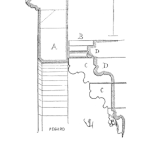
Background:
A histogram – is an approximate representation of the distribution of numerical data. The term was first introduced by Karl Pearson:
[Read more…]Your Reliability Engineering Professional Development Site
by Semion Gengrinovich Leave a Comment

Background:
A histogram – is an approximate representation of the distribution of numerical data. The term was first introduced by Karl Pearson:
[Read more…]
FINESSE is a fishbone (cause and effect) diagram, a mnemonic, and a mental model. FINESSE stands for Frame, Illustrate, Noise Reduction, Empathy, Structure, Synergy, and Ethics. The FINESSE fishbone diagram is peer-reviewed and battle-tested. Most importantly, it works.
As applied to effective communication, systems thinking is the cornerstone of FINESSE.
A system is a collection of interrelated or interacting parts, each of which can affect the behavior or outcomes of the whole. One defining property of a system is that it provides a function that none of the parts can accomplish by themselves. The corollary is that a system is not the sum of the parts but the product of their interactions. [Read more…]

“What’s the MTBF of a Human?” That’s a bit of a strange question?
Guest post by Adam Bahret
I ask this question in my Reliability 101 course. Why ask such a weird question? I’ll tell you why. Because MTBF is the worst, most confusing, crappy metric used in the reliability discipline. Ok maybe that is a smidge harsh, it does have good intentions. But the amount of damage that has been done by the misunderstanding it has caused is horrendous.
MTBF stands for “Mean Time Between Failure.” It is the inverse of failure rate. An MTBF of 100,000 hrs/failure is a failure rate of 1/100,000 fails/hr = .00001 fails/hr. Those are numbers, what does that look like in operation? [Read more…]
by Lindsay Walker Leave a Comment

In the intricate landscape of modern manufacturing, the efficiency and quality of the production system are paramount. These two pillars underpin a company’s competitiveness, profitability, and customer satisfaction. A critical factor influencing these metrics is the maintenance strategy employed. This research delves into the profound impact of maintenance strategies on production efficiency and quality, exploring various approaches, their implications, and real-world case studies.
by Greg Hutchins Leave a Comment

The project hasn’t been going too well; KPI’s indicate problems, staff are demotivated, the customer is complaining, the schedule is in double digit revisions, rework and resubmissions reflect quality, and you may be on your third or even fourth project manager, and cash is all but flowing. Phew…what will happen next?
Despite these symptoms the project is allowed to struggle on until, one day, one brave soul has the courage to admit that enough is enough! The self-help applications of Band Aids and a couple of paracetamols obviously haven’t worked. Making an appointment to see your local GP or even a trip to the emergency room at this juncture may also be a tad late. It’s time for a surgeon or, in project terms, a troubleshooter.
[Read more…]by Mike Sondalini Leave a Comment

Many managers think that high equipment reliability needs a reliability mindset. They think you need the right beliefs and values to get reliability. Reliability requires both correct thinking and correct behaviour, but behaviour is by far the most important. Your plant and machinery will deliver outstanding reliability only if their parts are not heavily stressed. Reliability is the result of properly doing the right actions to the parts in your machines—the right belief comes later, once the evidence is in. You make your machines and equipment reliable; you do not think them into being reliable with a good attitude. You do not need to have the right mindset to get highly reliable machines; you only need to deliver to your machinery parts the right environment for high reliability. If reliability is mostly the result of the behaviours that you do, it means that great reliability can be created everywhere.
[Read more…]
People claim poor correlation of predicted and observed MTBFs. That is understandable because handbook failure rates and fudge factors for quality and environment were derived from unknown populations or samples. People also claim there is no basis for applying statistics or probability to MTBF predictions. MTBF predictions use failure rate averages that lack statistical causation. Why not incorporate Paretos in MTBF predictions?
Paretos are fractions of equipment failures caused by each type of part or subsystem. They represent what really happens. Incorporating Paretos requires statistics to adjust MTBF predictions. That causes Paretos in MTBF predictions to match field Paretos. A 1992 ASQ Reliability Review article “MIL-HDBK-217G” proposed using observed Paretos to adjust handbook MTBF predictions with a “Reality” factor.
[Read more…]by Hemant Urdhwareshe Leave a Comment

Dear friends, Institute of Quality and Reliability is happy to release this video on Reliability Sampling Plans. In this is Part-1 of the video, Hemant Urdhwareshe has explained the basic concepts in Sampling plans. These include Sampling Risks and Operating Characteristics. We are sure, viewers will find this video useful!
We will release part-2 of the video where Hemant will explain Fixed Length Reliability Test Plans and Sequential Test Plans (PRST).
[Read more…]by George Williams Leave a Comment

In this video, George discusses how clean, dry, well balanced, and consistent air can be a huge opportunity for continuous improvement in a facility. If you’re looking to improve the efficiency and reliability of your facility, you won’t want to miss this!
[Read more…]by Ray Harkins Leave a Comment

Underpinning the coherence of statistical process control, process capability analysis and numerous other statistical applications is a phenomenon found throughout nature, the social sciences, athletics, academics and more. That is, the normal distribution, or less formally, the bell curve. Because of its ubiquity, this normal distribution is arguably the most important data model analysts, engineers, or quality professionals will learn.
by Semion Gengrinovich Leave a Comment

A brief introduction to the statistical hypothesis test called the t-test. Useful when examining if there is a difference between the means of two groups.
[Read more…]
The MTBF calculation is widely used to evaluate the reliability of parts and equipment, in the industry is usually defined as one of the key performance indicators. This short article is intended to demonstrate in practice how we can fool ourselves by evaluating this indicator in isolation. [Read more…]
by Greg Hutchins Leave a Comment

In a previous CERM Insights I mention ESG (Environmental, Social, Governance) Risk. The U.S. and European governments are starting to stress ESG risk management. This article looks at the proposed ESG requirements of the Security and Exchange Commission (SEC), and the implication for quality management.
[Read more…]by Mike Sondalini Leave a Comment

Value Driven Maintenance is a financial modelling method to pick maintenance process improvements. Used alone VDM gives you a “starry-eyed” view of maintenance savings. Once you combine VDM with Plant Wellness Way system-of-reliability analysis you get practical solutions.
[Read more…]by Hemant Urdhwareshe Leave a Comment

This is my second video on Sample Size in Reliability Testing! In this video, we will explain the Weibayes Approach to estimate sample size and estimating test length when sample size and shape parameter is known.
[Read more…] Ask a question or send along a comment.
Please login to view and use the contact form.
Ask a question or send along a comment.
Please login to view and use the contact form.